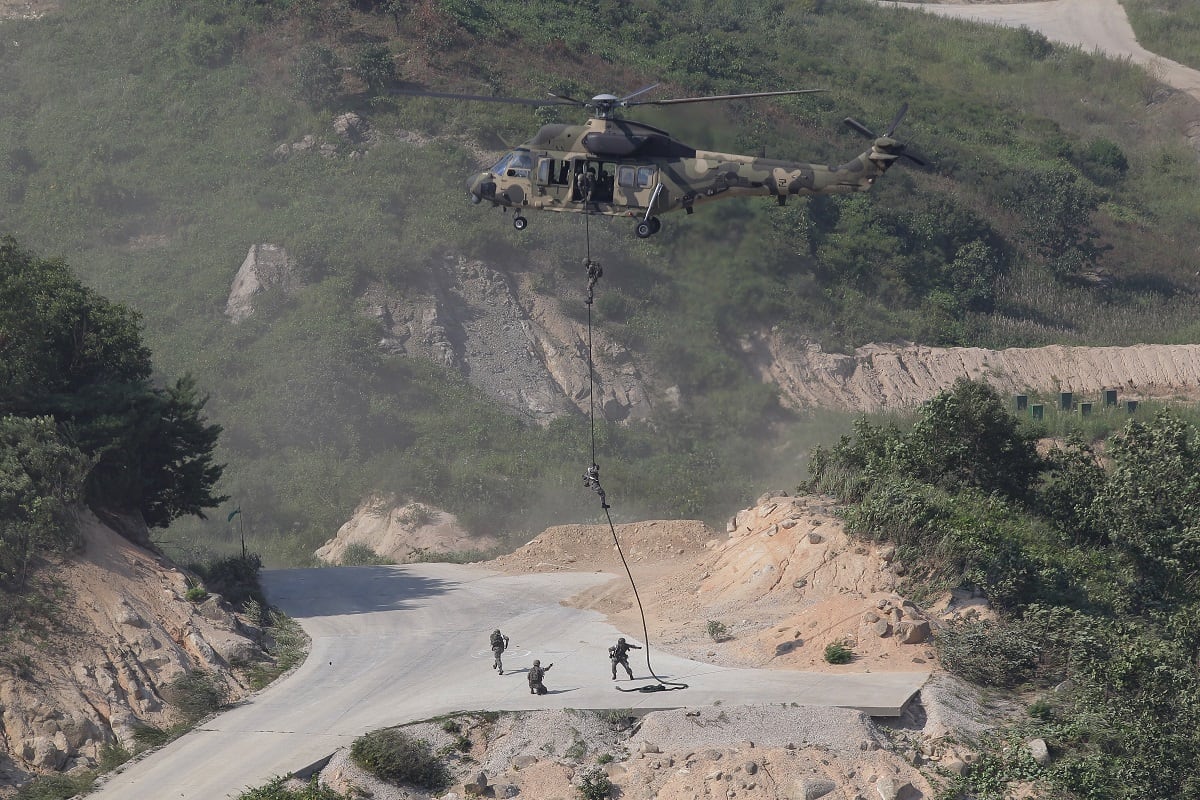SEOUL — Thousands of South Korean jet fighters, helicopters, warships and missile systems will be fitted with sophisticated identifications technologies by the mid-2020s under a major weapons upgrade program, according to the military and defense companies.
For the $2.2 billion deal to switch the decades-old Mode-4 Identification Friend or Foe, or IFF, system to the latest Mode-5, South Korea’s arms procurement agency has started issuing a request for proposals.
“The number of equipment eligible for the Mode-5 upgrade account approximately 2,000 related to 70 weapons systems,” according to a spokesman for the Defense Acquisition Program Administration. “The request for proposals will continued to be issued separately by the types of weapons systems over the coming weeks.”
The upgrade program is in line with the transfer of IFF systems to the Mode-5 version by the U.S military, as the South Korean military conducts key operations with U.S. forces on the Korean Peninsula under the authority of the Combined Forces Command.
By 2020, all NATO nations are required to introduce the Mode-5 systems, using advanced cryptographic techniques to secure their systems against electronic deception by adversaries.
“This is a huge program as for the numbers and budget, and is strategically important to upgrading the battlefield capability of the South Korean military and its joint operations with allied forces,” said Kim Dae-young, a military analyst at the Korea Research Institute for National Strategy.
“The new encrypted system will allow South Korean and its allied troops to work safely together, reducing the risk of friendly fire incidents, and it will also offer commanders a better view of the battlefield,” Kim added.
RELATED

IFF works by sending coded signals, with equipment on friendly planes and ships able to receive and instantly decode the encrypted challenge message, then send the appropriate response to identify themselves.
Three South Korean defense manufacturers are competing for the IFF upgrade contract by teaming up with foreign IFF developers. They are Hanwha Systems, teaming up with U.S. company Raytheon and Hensoldt of Germany; LIG Nex1, with Italy’s Leonardo and Thales of France; and Korea Aerospace Industries, joining hands with BAE Systems of the United Kingdom.
Unlike the installation of the Mode-4, the technologies of which belong to foreign IFF makers, domestic companies are involved in the Mode-5 systems development and will locally produce the equipment for cost-effectiveness and sustainable integrated logistics support, according to Defense Acquisition Program Administration officials.
Hanwha Systems, a leading defense electronics company formerly known as Samsung Thales, claims it has the advantage of having know-how related to IFF integration and design.
“Our company was in charge of almost all Mode-4 upgrade programs in cooperation with foreign partners,” said Yoon Seok-joon, a consultant with Hanwha Systems' avionics business team. “Through the experience, we have much better knowledge of IFF design and functions than other local competitors. This is a clear advantage.”
LIG Nex1, a precision missile developer, formed a task force in 2016 for Mode-5 upgrade work to seek related technology for localization.
As a result, the company successfully localized a Mode-5 system for its KP-SAM Shin-Gung (or Chiron) shoulder-launched surface-to-air missiles with the help of Thales, which is contracted to provide Mode-5 technologies for ground weapons systems.
“Based on the successful development of a Mode-5 device for Shin-Gung, we’re now able to independently develop Mode-5 equipment for other weapons systems, such as Hybrid Biho air defense system; Chunma short-range surface-to-air missile; and TPS-830K low-altitude radar,” said Park Jung-ho, program manager of LIG Nex1’s Mode-5 upgrade team.
To help facilitate the certification of its Mode-5 systems by the U.S. Defense Department, LIG Nex1 recently signed an agreement with the U.S. defense system certification contractor KBR.
Korea Aerospace Industries is expected to win contracts for Mode-5 devices to be fitted on advanced aircraft, including F-15K fighters, T-50 trainer jets and Surion utility helicopters. KAI develops the Surion platform.
“We own thousands of platforms around the world with this product, so we have lots of experiences in the U.S. and other countries as well as with this IFF piece of equipment,” said Rob Peer, president of BAE Systems in Korea. “It’s advanced technology with low weight, low power and cost effective. All of those things make it very effective.”
Peer stressed that he feels BAE Systems’ Mode-5 is the best fit for the systems of the F-35 fighter jet, which South Korea is to deploy in the coming years.
Email: jeff@defensenews.com
Jeff Jeong was the South Korea correspondent for Defense News.








